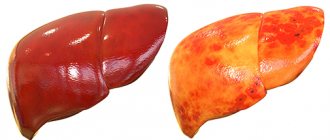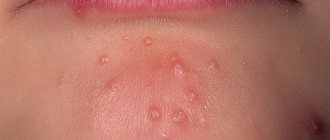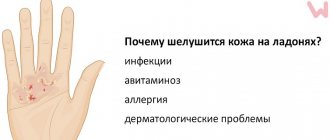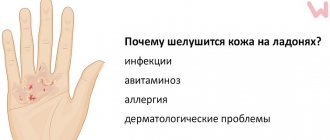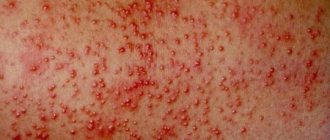Keratoma is a benign formation on the skin that appears due to a local accumulation of horny cells of the epidermis. Outwardly, such manifestations resemble convex pigment spots with hard scales on the surface. And they are often located on the face, forearms, upper back, and arms.
Single or multiple keratomas are typical for mature people over 40 years of age. This skin pathology is rarely encountered in children and young people. They appear equally in men and women. Cases of self-healing have been recorded when formations of this type disappeared by themselves. But often raised dark spots reappear in the same areas of the skin.
Are keratomas dangerous? Do they need to be treated or not? How to get rid of keratomas at home? The specialists of the Medical Center for the Diagnostics of Moles “Lazersvit” have the answers to all these questions.
Keratomas: causes of appearance?
Keratoma, according to dermatologists, develops for one of two reasons - excessive ultraviolet radiation and the physiological processes of aging of the skin. The predisposition to the development of pathology, according to medical experts and geneticists, is inherited. But there are no clear reasons for the appearance of a formation, such as, for example, in condyloma, which is caused by the human papillomavirus. At one point, an accumulation of cells is observed, which leads to an anomaly.
Skin keratoma, as a rule, does not pose a threat to health. But dermatologists strongly recommend observing the spots. After all, individual formations have a tendency to reproduce and grow. And in rare cases, they degenerate into malignant neoplasms.
What to remember:
- Keratoma is a benign neoplasm that appears due to mutation of skin cells and the growth of the keratinized layer of tissue.
- Ultraviolet light is the main provocateur of keratomas. Tanning with keratomas is contraindicated, both natural and in a solarium.
- For self-removal of keratomas, pharmacies sell special acid-based preparations.
- You can treat a keratoma yourself only after a medical diagnosis, making sure that it is not another tumor.
- Folk remedies are mainly aimed at eliminating discomfort from keratomas.
- Vinegar-based compositions remove growths. But they can lead to chemical burns.
Why should a keratoma be observed?
The skin disease keratoma is considered by oncologists to be a borderline formation, especially in patients with an increased risk of cancer. The probability of malignancy into melanoma or basal cell carcinoma varies in different age groups in the range of 8-35%. For this reason, people who have one or more formations of this type are recommended to see a dermatologist. Regular visits to the doctor allow you to notice signs of degeneration in the early stages and begin treatment in a timely manner. Well, it’s better to remove the protruding spot in order to prevent even the minimal likelihood of pathological processes.
The risk of cancer is not the only reason to see a doctor. Keratoma on the face is perceived as a cosmetic defect, attracts the attention of others, and becomes the cause of complexes. A convex formation on the body can be injured by tight clothing or accessories. In this case, there is a threat of secondary infection.
Age-related keratoma “loves” to grow on the scalp. The formation is often damaged by a comb and hairdresser's accessories during cutting and styling.
Each case of keratoma requires an individual approach. And only a qualified doctor can give recommendations to the patient - treat or remove, ignore or observe.
What are destructive (ablative) methods?
All skin tumors must be examined by a dermatologist before removal due to the risk of skin cancer. Treatment performed in a timely manner will help prevent the development of basal cell carcinoma (BCC) or squamous cell carcinoma of the skin (SCC).
- Cryosurgery using liquid nitrogen is the most common method for treating keratoses, but is not suitable for hyperkeratotic lesions. Liquid nitrogen is sprayed directly onto the affected areas of the skin using a cryodestructor or applied using the “reed” method (application with a cotton swab on a wooden stick). Cryosurgery is easily performed on an outpatient basis, shows excellent cosmetic results and is well tolerated.
- Radio wave, electro- and diathermo-laser destruction.
- Photodynamic therapy involves the application of a photosensitizing agent, methyl aminolevulinate, and then exposure to light of a specific wavelength, which leads to tissue necrosis. Photodynamic therapy is well tolerated and has excellent cosmetic results.
- Surgical removal . The surface of the skin is cleaned with a special instrument (curette).
- Chemical peeling:
- Jessner's solution (resorcinol, lactic and salicylic acids in ethanol);
- trichloroacetic acid solution 35%.
- Dermabrasion . The affected areas of skin are removed using a fast-moving abrasive brush.
- Phototherapy (IPL) and fractional photothermolysis - coagulation of keratosis elements using light energy. Suitable for the initial manifestations of actinic keratosis.
Classification
Keratomas are classified as follows:
- Seborrheic keratoma appears most often on the chest, back and scalp. Initially, this is a yellow-brown spot, the diameter of which can reach 3 cm. Over time, the surface of the formation becomes dense, and scales appear on it. The color changes to dark brown or black. Externally, this skin pathology looks like dried raisins stuck in the skin.
- Senile keratoma affects the skin of people over 35 years of age. A spot with a diameter of up to 2.5 centimeters appears on the skin. Over time, it thickens, becomes crusty, cracks, and changes color from yellow to black. The growth grows slowly, but over time it can protrude above the skin by a centimeter or even more. Senile keratoma, as this type of neoplasm is also called, is often localized on the shoulders, head, and back. Less common on the face and neck. Senile keratomas can grow in colonies. They also often become inflamed due to physical damage.
- Horny keratoma, which dermatologists often call “cutaneous horn,” has an increased risk of degeneration. First, a gray or brown spot appears on the skin, which eventually becomes covered with scales. A convex tubercle with a rough surface is suitable for placement of the arms, chest, and back. But other parts of the body are no exception. Sometimes patients are diagnosed with multiple horny keratomas.
- Follicular keratoma appears on the cheeks, lips, nose, eyelids. The skin first turns pink, then small tubercles grow at the site where the spot appears.
- Angiokeratoma is a nodular formation of red, black or blue color. Its size can reach 10 centimeters, but most often the growth grows to 2-3 centimeters. Often such skin pathologies form on the back, abdomen, legs and genitals.
- At the first stage, solar keratoma looks like a flat mole. Gradually it begins to peel off. Scales form on its surface. Dense lesions are often found in men over 40 years of age. Location: back, face, feet. Education is rarely singular. As a rule, this is a whole colony of growths. In some cases, degeneration into squamous cell carcinoma is diagnosed.
The type of keratoma and its risks for the patient are diagnosed by a dermatologist after examining the formation.
ethnoscience
As we can see, keratomas can be easily cleaned at home using special products. All of them are made on the basis of acids and burning chemical components. Accordingly, natural ingredients also contain acids. Therefore, you can prepare an effective folk remedy at home that can cope with keratoma. Let's look at some of the most popular recipes and see how they work.
Vinegar and onion skins
Ingredients:
- Vinegar 9% - 1 tbsp.
- Onion peel - 4 tbsp. l.
How to prepare: Wash the husks and pour boiling water over them. Dry in a well-ventilated area. Pour vinegar over the dried husks. Leave in a dark place for two weeks. Strain.
How to use: On the first day, apply a compress directly to the keratoma area for half an hour. The next day, leave the mixture on the affected area for an hour. So daily increase the exposure time by half an hour until you reach three-hour procedures.
Result: So in a week you will completely burn the keratoma. Acetic essence is a potent acid. The keratoma will be chemically burned. When using this recipe, be careful, you can burn the skin around the lesion, and even cause a chemical burn at the site of the keratoma, which can lead to scarring.
Ointment with celandine
Ingredients:
- Dry celandine - 50 g;
- Pork fat 50 gr.
How to prepare: Grind the dried celandine herb into powder. Melt the pork fat and mix the ingredients thoroughly.
How to use: Rub the keratomas with ointment three times a day.
Result: As you know, celandine also contains acids. In dry form, celandine will inhibit the growth of keratoma and gradually remove the neoplasm. Complete recovery may take a long time, up to several months.
Walnut balm
Ingredients:
- Walnut fruits - 5 pcs;
- Olive oil - 10 tsp.
How to prepare: Grind walnuts, heat the oil. Mix the ingredients and leave for a day in a dark place.
How to use: Apply the warmed balm to the keratoma twice a day for a month.
Result: The balm softens the neoplasm and relieves discomfort on the skin.
Aloe compress
How to prepare: First, prepare an aloe leaf; to do this, place it in the freezer for 5 days. Then defrost the sheet and cut it into thin slices.
How to use: Apply aloe to the keratome and secure with a plaster or bandage. Leave it overnight. Repeat the procedure daily for a month.
Result: Over time, the keratoma will shrink until it disappears completely. You can simultaneously dry the lesion during the day by wiping it with alcohol.
The above recipes have different effectiveness and duration of treatment, some are even aimed at relieving unpleasant symptoms. So removing keratoma using folk remedies is not easy. The vinegar-based recipe is the most effective, but side effects such as burns are possible.
Diagnostics
An appointment with a dermatologist begins with taking an anamnesis. The doctor clarifies how long ago the formation was, asks the patient about sensations - painful manifestations, itching, and studies the symptoms. Next, the skin is examined to determine the size and location of the keratoma. The instrumental method - dermatoscopy - allows you to clarify the diagnosis and exclude other skin diseases.
A special device allows you to identify the formation, examine the structure of its tissues, and the depth of its occurrence. The dermatoscope magnifies the image many times, so errors are excluded. And if there is a risk of the keratoma degenerating into a tumor, the doctor will determine this. In some cases, histology is recommended - the formation is sent to the laboratory to determine the cellular composition.
Keratoma: how to treat?
To help the patient get rid of keratoma or actinic keratosis, the doctor prescribes a conservative or surgical treatment method. If drug therapy does not produce results, if the location of the formation is unsuccessful, if it is perceived as a cosmetic defect, surgery to remove the keratoma is prescribed.
Drug therapy
Drug treatment involves the use of various ointments, solutions or emulsions with active substances. It is immediately important to note that such methods are effective in the initial stages, when the stain has just appeared. Therapy must be prescribed by a doctor. Self-medication is strictly not recommended, as it can cause complications in the form of damage to surrounding healthy tissue.
Keratoma: how to remove surgically?
The keratoma is surgically removed using one of the following methods:
- laser method;
- cryodestruction;
- radiosurgery method.
The leader of choice is laser removal, since it minimizes the risks of negative consequences, bleeding, wound infection, and relapses. In a few minutes the formation is completely removed. And the wound heals within a few days.
Possible risks
Attempts to remove the keratoma yourself by tying it with thread or cauterizing it with aggressive media are strictly prohibited. This can lead to serious consequences, including the degeneration of a benign tumor into cancer.
Preventing keratomas
After removal of the keratoma, it is necessary to take a number of measures to prevent relapse - the reappearance of the tumor. To do this, follow these simple recommendations:
- Avoid direct exposure of the skin to sunlight. Ultraviolet radiation provokes the formation of keratomas. Use creams with sunscreen filters, at least 40 SPF in summer.
- Avoid solariums, they contain direct rays of the same ultraviolet radiation.
- Take vitamin complexes, in particular vitamin C, it prevents the formation of keratomas. Or include foods rich in this vitamin in your diet: black currants, raspberries, citrus fruits.
- Lead a healthy lifestyle: exercise, balance your diet, eliminate fatty, fried foods, and sweets. Such measures will help improve metabolism and prevent the appearance of keratomas.
Surgeon and cosmetologist Vitaly Mikryukov will talk about keratomas and their removal:


